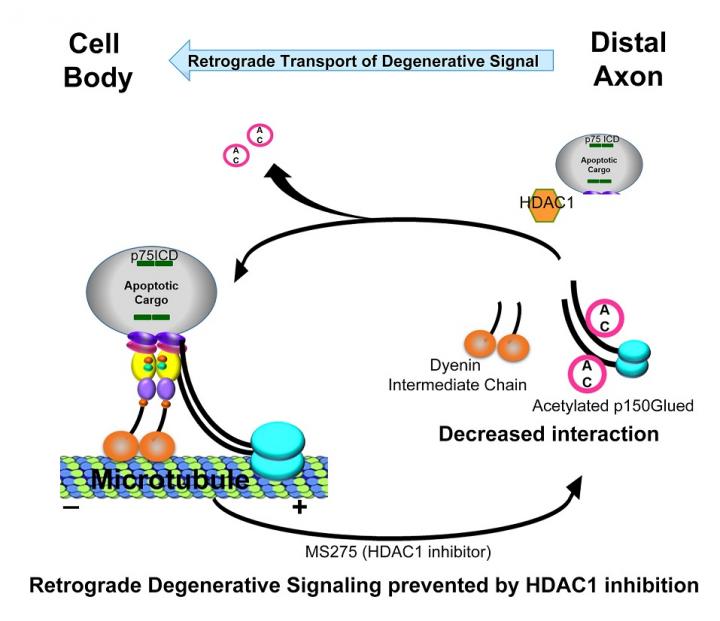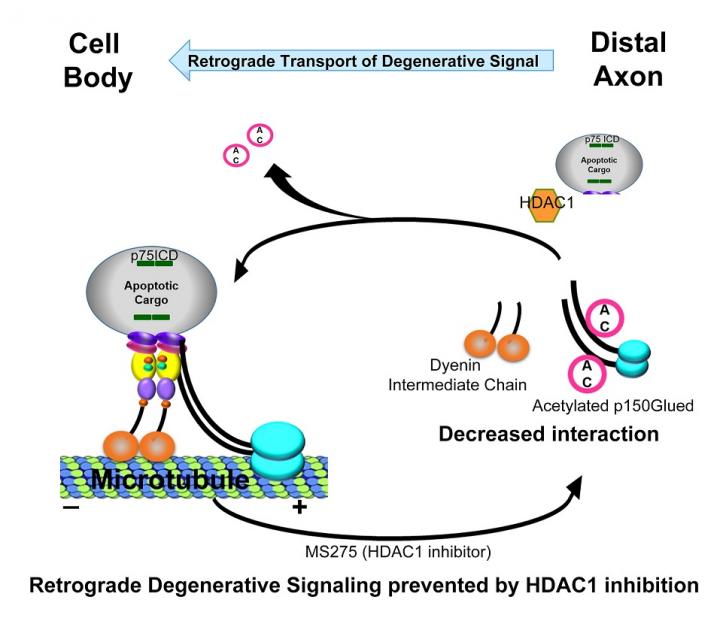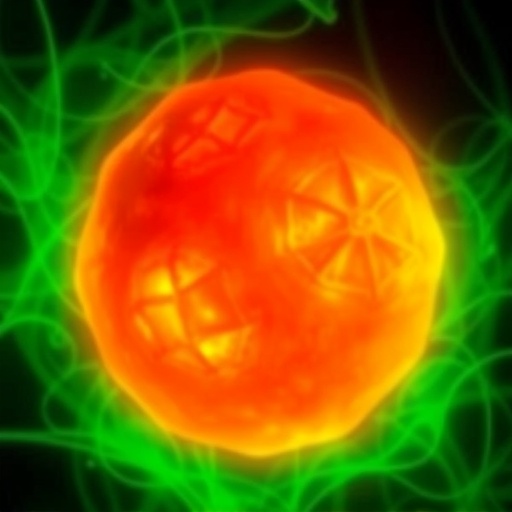
Credit: Carter Laboratory/Vanderbilt University
A biochemistry instructor curious about an enzyme discovered in the damaged neurons of people with multiple sclerosis made a leap toward a potential cure for countless neurodegenerative ills.
Vanderbilt University's Amrita Pathak, working with Bruce D. Carter, biochemistry professor and associate director of the Vanderbilt Brain Institute, found that the enzyme histone deacetylase 1 (HDAC1), normally in the nucleus of cells, is also present in the axons of some neurons. When a degenerative signal is activated, HDAC1 modifies a component of a molecular motor, which then drives a signaling agent down the axon to the neuron's cell body, killing it.
The motor is integral to that process, Carter said, because of the extreme length of axons in some neurons.
"Some of our neurons, if their cell bodies were the size of basketballs, their axons would reach about 6 miles," he said. "This is a new finding in terms of how the motor can be assembled and allow transport back to the cell body. There has been evidence of a retrograde degenerative signal, and now we've identified key components and a mechanism controlling their transport."
Their paper, "Retrograde degenerative signaling mediated by the p75 neurotrophin receptor requires p150glued deacetylation by axonal HDAC1," appears online today in the journal Developmental Cell.
The biochemistry team worked with Deyu Li, professor of mechanical engineering, to build microfluidic devices that separate the axon from the cell body, allowing them to determine which part of the degenerative signaling process was happening where.
The Carter laboratory has long studied that signaling agent, the neurotrophin receptor p75(NTR), and the role it plays in development and diseases of the brain. It's implicated in Alzheimer's disease, amyotrophic lateral sclerosis, traumatic brain injury, ischemia, hormone deficiency and other diseases or injuries to the nervous system.
Their research builds on the work of Vanderbilt University biochemist Stanley Cohen, who in 1986 shared the Nobel Prize for Physiology or Medicine for the discovery of nerve growth factor, the founding member of the neurotrophin family, and its effect on cells, Carter said.
Pathak, who used sympathetic neurons for her research, intends to find whether similar cellular processes are happening in motor neurons known to be affected in ALS. "If we can block that, we can block the neuron death that occurs," she said.
###
Media Contact
Heidi Nieland Hall
[email protected]
615-322-6614
@vanderbiltu
http://news.vanderbilt.edu/research/
Related Journal Article
http://dx.doi.org/10.1016/j.devcel.2018.07.001





